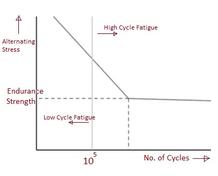IoT vs IoE vs M2M: Understanding the Differences
Advertisement
This article explores the distinctions between IoT (Internet of Things), IoE (Internet of Everything), and M2M (Machine to Machine) communication. While these terms are often used interchangeably, they represent different scopes and applications within the interconnected world of technology.
What is IoT? - Internet of Things
Definition and Meaning
The Internet of Things (IoT) refers to a network of physical “things” or devices interconnected with each other. These devices are equipped with:
- Software: For data collection, storage, processing, and decision-making.
- Hardware: Including electronics that make physical objects responsive and capable of handling data.
- Sensors (or Actuators): To collect data from the environment (e.g., temperature, light, proximity).
- Network Interface: Enabling communication between devices through wired or wireless networks.
IoT devices rely on existing network technologies, adding a framework to create their own networks. This means IoT cannot exist independently but depends on other technologies.
Components of an IoT Device
- Software Module: This manages data collection, storage, processing, and manipulation, as well as decisions based on received commands.
- Hardware Module: Houses the electronics, enabling physical interaction and data handling.
- Sensors (or Actuators): Different types of sensors are used, depending on the application. Common examples include optical, temperature, humidity, proximity, and touch sensors.
- Communication Network Interface: This facilitates communication using wired or wireless protocols, allowing devices to interact directly or via networks.
Examples of IoT Applications
- Aircraft Networks: Connecting aircraft, airpaths, and ground stations.
- iBeacon Networks: Automatically sharing information, such as gym goers’ activities, with their friends.
- Farming: Monitoring soil moisture levels to optimize irrigation.
- Animal Tracking: Using sensors to prevent theft.
- Parks and Recreation: Providing facilities to visitors through RFID-equipped wrist tags.
- Smart Homes: Connecting all devices within a home.
What is M2M? - Machine to Machine Communication
Definition and Meaning
M2M communication enables bi-directional data transfer between machines, or between machines and management systems. It’s also sometimes referred to as ‘mobile to machine’ or ‘machine to mobile’. The key idea is networking machines so they can freely exchange data without human interaction.
M2M communication typically works in two ways:
- Uplink: Collecting product and usage data.
- Downlink: Transmitting instructions, software updates, or remotely monitoring equipment.
In M2M, data from machines can be automatically uploaded to a computer system without human involvement, enabling remote monitoring and maintenance.
M2M Device Components
An M2M device typically includes a sensor or tag and a communication module.
Examples of M2M Applications
- SCADA Systems: Remotely monitoring and controlling systems.
- Closed-loop Plant Floor Automation Systems: Optimizing manufacturing processes. While SCADA systems are often proprietary, M2M communication allows interaction with public wireless networks and access methods like Ethernet.
- Security
- Tracking and Tracing
- Payment Systems
- Healthcare
- Remote Maintenance and Control
- Metering
- Manufacturing
- Facility Management
What is IoE? - Internet of Everything
Definition and Meaning
The Internet of Everything (IoE) expands upon the IoT infrastructure. It aims to add intelligence to the IoT network, facilitating convergence, visibility, and orchestration across previously separate systems. This allows individual systems to function as a cohesive whole.
IoE Subsystems
The IoE encompasses the following subsystems:
- Internet of Digital (IoD)
- Internet of Humans (IoH)
- Internet of Things (IoT)
- M2M (Machine to Machine) Communication - A component of IoT.
IoE Example
Consider an air traffic network. In the IoE context, this would include not just planes and paths, but also ticket machines, customers, staff, and environmental conditions.

Similarities and Differences: IoT vs IoE
IoE is built upon the foundation of IoT, so they share similar frameworks and protocols. The primary difference is that IoE incorporates additional features to provide greater intelligence to network devices.
In essence: IoE = IoD + IoH + IoT + M2M
Similarities and Differences: IoT vs M2M
| Specifications | IoT | M2M |
|---|---|---|
| Architecture | Hybrid of distributed and centralized | Centralized |
| Topology | Star, Mesh, Cluster Tree | Star |
| Network Tier | Hierarchical | Flat |
| Data Rate | 10 to 300 Kbps | 100 to 1000 Kbps |
| Security | Strong | Minimal to strong |
| Range | 100m to 20 Km | 100m to 5 Km |
| End to End Latency | Higher | Lower |
| Downstream/Upstream | 50/50 | 80/20 |
| Technology | IoT platforms | Cellular |
| Battery Power | 2 to 15 years | 1 Day |
| Flow Direction | Some to data center, some at network edge | All traffic to data center |
| Vendors | Several to many | One |
Conclusion
While IoT, IoE, and M2M are related concepts, they each represent distinct layers of interconnectedness. IoT focuses on connecting physical devices, M2M enables machine-to-machine communication, and IoE integrates these elements along with human and digital aspects to create intelligent, cohesive systems. Understanding their differences is crucial for leveraging these technologies effectively.
Advertisement
 T&M
T&M 



